XLR8R’s Best of 2011: Releases, Part Two
This is the end, the final installment of XLR8R‘s Best of 2011 coverage. We gave […]
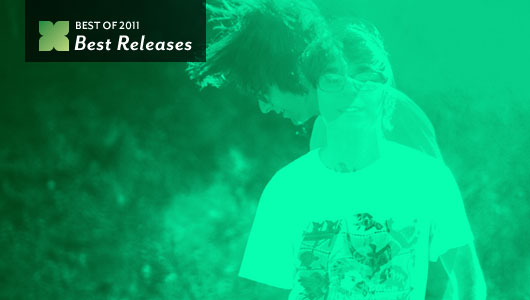
XLR8R’s Best of 2011: Releases, Part Two
This is the end, the final installment of XLR8R‘s Best of 2011 coverage. We gave […]

This is the end, the final installment of XLR8R‘s Best of 2011 coverage. We gave you our first 20 picks for the top releases of 2011 yesterday, and now we present the top 10.
10. Sepalcure
Sepalcure
(Hotflush)
On paper, the combination of Machinedrum (a.k.a. Travis Stewart) and Braille (a.k.a. Praveen Sharma) seems like an instant winner, but until this year, Sepalcure had yet to make its mark as an electronic project that could excel in the long-player format. With the release of the duo’s debut self-titled LP, all of that changed. Rarely is there a dull moment on Sepalcure; rather, the album continues to carve interesting spaces within the current UK-informed musical landscape, presenting thick pieces of moody bass music without a misstep in sight.
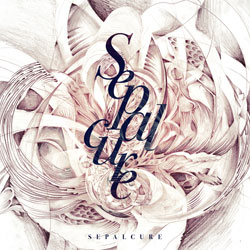
Once “Pencil Pimp,” the record’s second offering, takes hold, the listener sinks down into Sepalcure’s world, and the sonic spaces on display are nothing short of stunning. Along the way, the record lands on pieces of hyper-real emotions, in which layers of distantly related sound sources combine to a create thick globs of warmth, air, and low vibrations. Tracks like “Eternally Yrs” and “Breezin” push forward with their intricate assemblage of percussion beckoning movement, while tunes like “Yuh Nuh See” and “Hold On” lean heavy on the snare, cutting the proceedings into half-time to further explore the vast pockets in between. The results may not be the most diverse, but each track feels painstakingly put together. The richness of Sepalcure’s productions is as capable of revealing itself at any forward-thinking night club as it is in someone’s headphones. Glenn Jackson
9. Zomby
Dedication
(4AD)
At this point, it’s clear that Zomby is one of the most interesting producers operating today. While the mystery surrounding his reputation and persona continues to swell, that growth is paralleled by the increasing reverence for his fractured output. Dedication arrived about halfway through the year—admittedly, with a bit of trepidation, as the artist had been suprisingly quiet for more than a year and many also wondered, “What the hell is Zomby doing on 4AD?” As we soon found out, there was no need for concern.
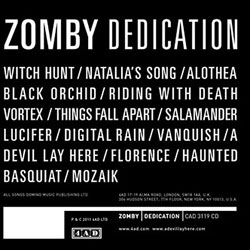
Dedication is perhaps the most intentional-sounding release of Zomby’s career. Each sonic element feels meticulously chosen and specifically sculpted to fit his vision, as if Zomby had some mathematical formula for arriving at the theoretically perfect phrasing and rhythmic qualities of his synth lines. As the LP plays out, one gets the sense that Zomby is some sort of weird puppeteer-type overlord, a producer behind the curtain moving elements around purely to serve his own master plan. And with that, it’s hard to shake the feeling that he’s laughing at us, too—how else could one explain the brief track times? In seconds, “Alothea,” “Digital Rain,” and “Mozaik” reach heights other producers could only dream of attaining with hypnotic patterns and sparsely comforting arpeggios, only to teeter off before biting into something more substantial. More enticing (not to mention frustrating) are those beats that are ridiculously short, such as the tribal “Salamander” and the Timbaland-indebted mini-banger “Lucifer,” both of which last for less than a minute. Intentional or not, Dedication both requires—and continues to inspire—a lot of actual, real-life dedication from its audience. The glimpses Zomby offers into his world—no matter how brief they may be—are incredibly alluring, which is likely why his shadowy figure continues to ascend the proverbial mountain that is the UK production scene. Glenn Jackson
8. Oneohtrix Point Never
Replica
(Software)
It almost doesn’t make sense that Replica sounds as heady and highbrow as it does. Brooklyn producer Daniel Lopatin (a.k.a. Oneohtrix Point Never) has even said that he chose the drawing on the album’s cover because of its humorous qualities, and a large portion of the sounds he crafted the music from were lifted off a bootleg DVD of vintage TV commercials. It’s more or less common knowledge that, next to sex, humor basically drives televised advertising. It could also be argued that commercials are snapshots of the zeitgeist of any given era. On Replica, Lopatin deconstructs these time capsules to reveal parts of our everyday world that maybe we didn’t quite realize were there.
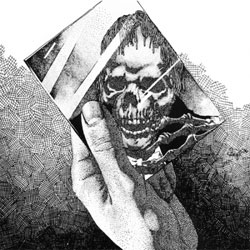
Though OPN isn’t exactly known for crafting sexy music, there is an insidious undercurrent to the gulps, sighs, and coughs that comprise the organic rhythms around which Replica‘s other main element—masses of Juno-60 synth tones—drift. It can all sound both beautiful and surreal at times, but listen to those warped sounds again and maybe they become inexplicably funny or nightmarishly inhuman from a different perspective. “Child Soldier” almost certainly samples a soundbyte from Street Fighter II, or maybe the preview of a martial-arts film, products which in and of themselves sound fun and inconsequential, but when applied to the song’s jarring composition, the repetitious sample becomes borderline maniacal. Lopatin plays with these flipped perceptions throughout his 2011 LP, which makes for a very smart collection of music that isn’t afraid to concede a nudge and a wink on occasion. Patric Fallon
7. Altered Natives
Tenement Yard Vol. 2
(Eye4Eye)
Without question, Tenement Yard Vol. 2 takes the crown for slept-on album of the year. Although the modicum of attention it did receive was mostly positive, for whatever reason, it seems like much of the electronic-music world shrugged at the latest full-length from Altered Natives. It’s too bad, because the lengthy effort—which clocks in at 15 tracks totaling more than 90 minutes in length—includes some of the best house music released all year.
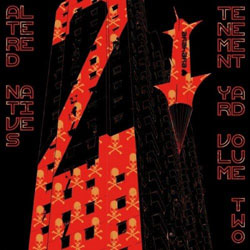
Granted, it’s not the most dynamic album. Producer Danny Native was smart enough to realize that he’s already carved out a unique sonic niche, one defined by chunky low-end rhythms and driving beats, and simply used the bulk of Tenement Yard Vol. 2 to further explore that aesthetic. The music doesn’t rely on frills—or melody, for that matter—as its unpolished percussion and raw vibes are instead allowed to take the lead. Plenty of producers strive to create the perfect soundtrack for dark, sweaty basements, but Altered Natives has already perfected the formula, and continues to turn out quality tunes—in bulk, no less. Supposedly, Native is already at work on Vol. 3. Hopefully, folks will be wise enough to pay attention when it sees the light of day. Shawn Reynaldo
6. Martyn
Ghost People
(Brainfeeder)
In the wake of dubstep’s creative demise, an entire crop of artists has been set adrift. While terms like “post-dubstep” and “bass music” crudely attempt to draw links between an increasingly disparate number of sounds, the fact remains that a whole lot of producers are operating in a veritable no man’s land, without a singular scene or genre to call their own. In some ways, this processes has been incredibly liberating, particularly for artists like veteran producer Martyn. The Dutch tunesmith, who now calls the US home, had previously made the jump from one genre to another, shedding his drum & bass beginnings for the moody confines of dubstep, and Ghost People serves as documentation of another, more gradual shift.
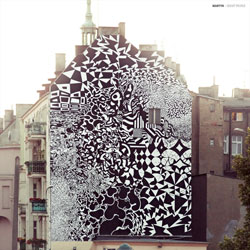
Traces of low-end worship still remain in the music, but the album takes far more cues from the strident sounds of house and techno—most effectively on standout cuts like “Masks,” “We Are You in the Future,” “Horror Vacui,” and the title track. That said, Ghost People is not an example of an artist simply hopping from one genre to another in hopes of staying current with the latest trends. The music here is far too detailed and sonically rich for that sort of characterization. What Martyn has done is reach back into his own history with electronic music, painstakingly selected minute elements from a variety of styles and eras, and used those bits to thoughtfully construct something that sounds both familiar and unquestionably innovative. He’s allowing himself to evolve, and Ghost People seems to indicate that the process is unfolding beautifully. Shawn Reynaldo
5. Gang Gang Dance
Eye Contact
(4AD)
Let’s get this out of the way: Gang Gang Dance‘s Eye Contact has hands down the best beginning and ending we heard on an album in 2011. The sprawling psychedelia of opener “Glass Jar” starts with a human voice muttering, “I can hear everything. It’s everything time,” and the anthemic closing track, “Thru and Thru,” ends with a computer voice whispering, “Live forever.” If that doesn’t spell it out clearly enough, this record operates on a twisted quasi-logic all of its own, but a fan of Gang Gang Dance wouldn’t have it any other way. We’ve watched this band grow from a group of outright noise makers into an outfit of seasoned songwriters with the innate ability to meld together the most disparate sounds into a cohesive work of art, which is precisely what Eye Contact is.
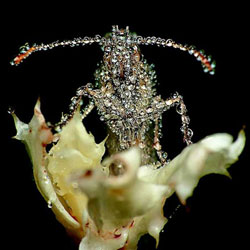
Singer Lizzie Bougatsos leads her band throughout its new record; her presence is so strong that you can practically feel her swaying in place during the lengthy instrumental breakdowns and otherwordly interludes. But when she’s singing, well, it sounds like something between a young Kate Bush conducting a seance and an Arabian pop-star refugee pleading for freedom. The music matches seamlessly, too. A mixture of spacey electronics, rollicking drum patterns, Eastern-influenced melodic themes, UK dance music, and, somehow, straight-up guitar pop coalesce to make a sound that’s practically peerless and a record that’s more oddly infectious and effortlessly cool than anything else we heard in 2011. Patric Fallon
4. Balam Acab
Wander/Wonder
(Tri Angle)
When an album doesn’t immediately captivate you with its songwriting, there needs to be another element that, for lack of a better word, compensates. Maybe it’s a unique sound that resonates with your musical sensibilities, or maybe its a fully constructed sonic world that’s unlike anything you’ve experienced before. On Wander/Wonder, the debut LP by young artist Alec Koone (a.k.a. Balam Acab), it’s both of those things, but that’s not to say there’s an utter lack of songwriting skill within these eight productions. Tracks like “Apart,” “Expect,” and “Oh, Why” certainly have their own kind of loose structures; they sound like R&B and radio-friendly pop tunes written by mermaids and the ghosts of Rodgers & Hammerstein. It’s all quite arresting and beautiful, no matter what you think of its shape.
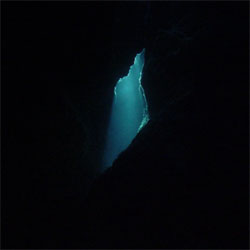
However, it’s ultimately Koone’s attention to detail and his knack for filling each moment of his music with layers of vibrant sound that outshines the songwriting. The producer himself has described his album as a journey, but for us, listening to Wander/Wonder feels more like floating underwater amongst the quiet, incandescent life of a choral reef. Each synth sound is like a flurry of bubbles rising to the surface or a school of glowing fish swimming across your view; the sonic textures feel like a handful of sand or your fingertips grasping onto a porous rock; every rhythm moves like a gentle current taking the pieces of the composition from one reef to another. It’s all so vibrant and fulfilling that you just about forget that this music isn’t the least bit normal at all, but exploring the unique structures of Balam Acab’s immersive universe offers a richness all its own. Patric Fallon
3. M83
Hurry Up, We’re Dreaming
(Mute)
If M83‘s masterful double-LP, Hurry Up, We’re Dreaming, isn’t the best pop record released in 2011, it is without a doubt the most ambitious. The fifth proper studio album by the French-born Anthony Gonzalez, this 22-track offering sounds like the culmination of everything he’s done leading up to it, only expanded, widened, and rendered into true 3-D. It’s the unbridled energy of Dead Cities, Red Seas & Lost Ghosts‘ electronic shoegaze, the widescreen concepts of Before the Dawn Heals Us, and the carefree nostalgia of Saturdays = Youth‘s pop hits boiled down to their purest forms and reconstituted as one magnum opus.
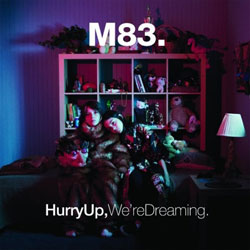
The arch of Hurry Up, We’re Dreaming isn’t steady in any sense of the word; powerful opening tracks “Intro,” “Midnight City,” and “Reunion” give way to drifting washes of ambient synths, subdued ballads, and giddy twee-pop about hallucinogenic frogs. And that’s just the first half of disc one. M83’s album is very much like a dream: You’re taken on a long, winding journey across an hour or so of some of the most dynamic and thoughtful songs written in 2011, but it’s a journey with no foreseeable conclusion and seemingly no point. It’s strangely beautiful, it’s deeply surreal, and it rarely makes any sense, but when it does, those moments are even more priceless.
And maybe this is the kind of record that is truly universal—quite possibly even timeless, too—because it is completely open for interpretation. We couldn’t begin to explain what lyrics like “We will dream on the shadow of our world” or “Send your dreams where nobody hides” actually mean, but when hearing them in the context of M83’s synth-driven music, it feels almost as if they were written just for you, a fact that has been fully evidenced by the album’s widespread and immediate success. Still, the best part of Hurry Up, We’re Dreaming has to be that it only marks the beginning of an auteur fully coming into his own. Gonzalez is a young man by all accounts, and will likely only continue to reshape, refine, and realize his craft. We’ll be there listening intently every step of the way. Patric Fallon
2. Rustie
Glass Swords
(Warp)
In 2011, it was quite common to praise electronic music based on what a producer didn’t put into a composition. Seriously, people (including us here at XLR8R) loved to compliment artists’ use of “sonic white space,” and descriptors such as “raw” and “stripped-down” almost surely indicated something positive. Well, Glass Swords, the debut full-length from Scottish producer Rustie, ascribes to none of those characteristics. It’s loud. It’s frantic. It’s anything but subtle. It’s also great.
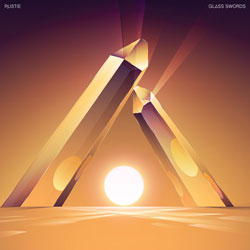
Somehow, Rustie managed to toss elements of hip-hop, electro, trance, R&B, videogame soundtracks, prog rock, and ’80s funk into an aural blender and come up with something big, bold, and brimming with energy. Even as it shamelessly mines all sorts of nostalgia, the album’s varied elements have been so finely mixed and mashed that Glass Swords still sounds fresh, even as it’s blasting you with a wonky guitar riff or a melody loop jacked from a long-forgotten Sega Genesis game. In all honesty, most of the songs here aren’t very club friendly, as the album’s manic pace and herky-jerky rhythms would only be suitable for the most spastic of dancefloors. Even for home listening, there’s nothing relaxing about Glass Swords. Simply put, there’s a lot happening here, and Rustie brings it to you with all the subtlety and nuance of a slap to the face. Nevertheless, it’s quite possible that getting smacked upside the head never felt—or sounded—so good. Shawn Reynaldo
1. Holy Other
With U
(Tri Angle)
Even though UK producer Holy Other literally remains a shrouded figure, the mystery and mystique surrounding his persona has done nothing to prevent him from breaking out in a huge way in 2011. Anyone who’s kept up with XLR8R‘s Best of 2011 lists shouldn’t be terribly surprised that With U has been deemed our #1 record of the year. It may only contain five songs, yet two of those wound up in the top 20 of our best tracks list (those that didn’t make it wouldn’t have been the least bit out of place), and the EP was largely responsible for propelling Holy Other to the second slot on our wrap-up of 2011’s best new artists.

In all honesty, it’s hard to say a whole lot more about Holy Other and his music without sounding like gushing fanboys. Nevertheless, With U is an incredible record. Even with its dark and dour drones—which are incredibly intoxicating on their own merits—the EP is stuffed with tangible emotion, some of which is surprisingly bright and all of which is incredibly potent. The music was undoubtedly produced in the bedroom, but no other venue could be more appropriate for its genesis, as the ghostly whispers of the warped vocal clips and the lurching drag of its drawn-out melodies speak to a universal sense of isolation that unites us all.
There’s an undeniable feeling of longing that permeates the record—quite possibly making With U the perfect soundtrack for an existence in which technology has placed a whole world of possibilities just a few keystrokes away, yet people by and large inexplicably feel lonelier than ever. It sounds to us like Holy Other is searching for connection, only he doesn’t know quite where to look, and the vast expanse of the universe isn’t providing much in the way of easy answers. It’s a quiet struggle that we’re all grappling with, which is probably why so many continue to rally around these five deeply affecting tracks. Shawn Reynaldo
Check out the rest of XLR8R‘s Best of 2011 coverage here.

